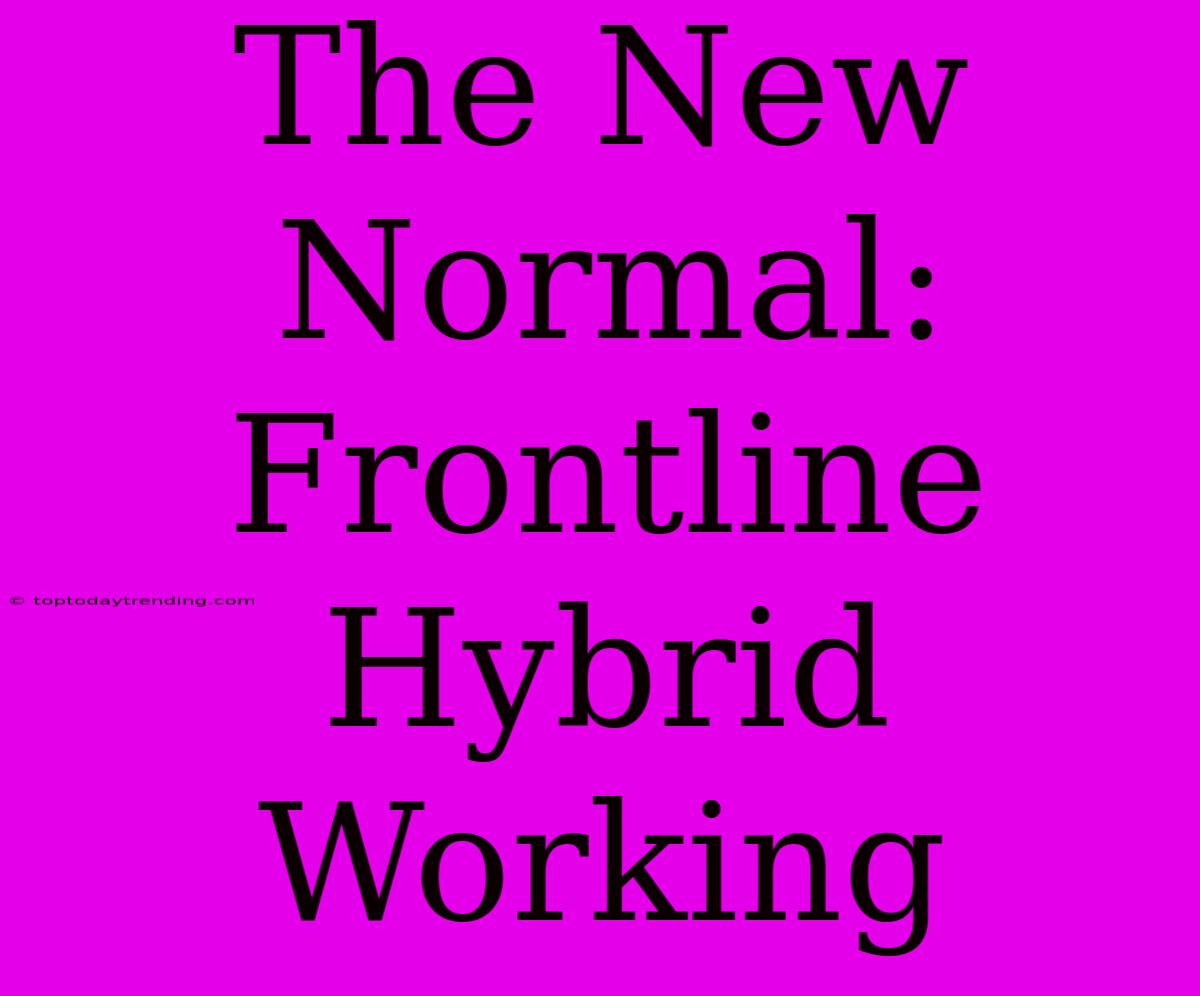The New Normal: Frontline Hybrid Working
The pandemic has fundamentally reshaped the way we work, ushering in a new era of hybrid working. While office-based roles have embraced remote working and flexible arrangements, the frontline workforce faces a unique set of challenges and opportunities in this new normal. This article explores the evolving landscape of frontline hybrid working, examining its impact on both employees and businesses.
The Frontline: Adapting to the New Reality
Frontline workers, encompassing roles like retail associates, healthcare professionals, and manufacturing employees, are often essential and directly interact with customers or clients. This inherent nature of their work poses unique challenges when integrating hybrid working models:
- Workforce Structure: Unlike office-based roles, many frontline positions require physical presence.
- Operational Needs: Frontline work often demands real-time collaboration and on-site problem-solving.
- Technology Gap: Access to reliable technology and digital infrastructure can vary significantly among frontline employees.
The Rise of Hybrid Solutions for Frontline Workers
Despite these challenges, businesses are actively seeking innovative solutions to embrace the benefits of hybrid working for their frontline workforce.
Here are some key trends emerging:
1. Flexible Scheduling:
- Shift-based scheduling: Companies are offering flexible scheduling options to allow frontline workers to choose shifts that best suit their individual needs.
- Part-time work: Increasing flexibility with part-time options allows workers to balance family commitments and work responsibilities.
2. Technology Integration:
- Mobile Apps: Companies are leveraging mobile apps for communication, task management, and training for frontline employees.
- Data-Driven Insights: Real-time data collection through apps provides valuable insights into operational efficiency and employee performance.
3. Enhanced Training and Development:
- Virtual training programs: Companies are offering virtual training programs to enhance the skills and knowledge of frontline workers.
- On-the-job learning: This allows for tailored training and development opportunities specific to individual roles.
4. Empowering Frontline Workers:
- Improved communication: Open and transparent communication channels are crucial for frontline workers to feel valued and connected.
- Increased autonomy: Providing frontline workers with greater autonomy and decision-making power fosters engagement and productivity.
Benefits of Frontline Hybrid Working
The implementation of hybrid working models for frontline workers offers tangible benefits for both employees and businesses:
For Employees:
- Improved work-life balance: Flexibility in scheduling and working arrangements allows employees to better manage personal commitments.
- Enhanced skills development: Access to virtual training and development programs promotes professional growth.
- Increased job satisfaction: Greater autonomy and feeling valued contributes to higher levels of job satisfaction.
For Businesses:
- Improved employee retention: Flexible work arrangements and enhanced employee experience lead to greater retention.
- Increased operational efficiency: Data-driven insights and technology integration streamline processes and boost productivity.
- Enhanced customer experience: Empowered and skilled frontline workers provide better customer service and support.
Challenges and Considerations
Despite its potential benefits, the transition to frontline hybrid working comes with its own set of challenges:
- Technological infrastructure: Ensuring access to reliable technology for all frontline workers is essential.
- Data security: Protecting sensitive data and maintaining compliance in hybrid environments requires robust security measures.
- Employee training: Investing in training programs for frontline workers to effectively utilize new technology and communication tools is crucial.
Moving Forward:
The future of work for frontline workers lies in the successful integration of hybrid working models. This requires a strategic approach that considers the needs of both employees and businesses.
By embracing technology, prioritizing employee well-being, and fostering a culture of continuous learning, businesses can unlock the full potential of frontline hybrid working, fostering a more engaged, skilled, and satisfied workforce.

